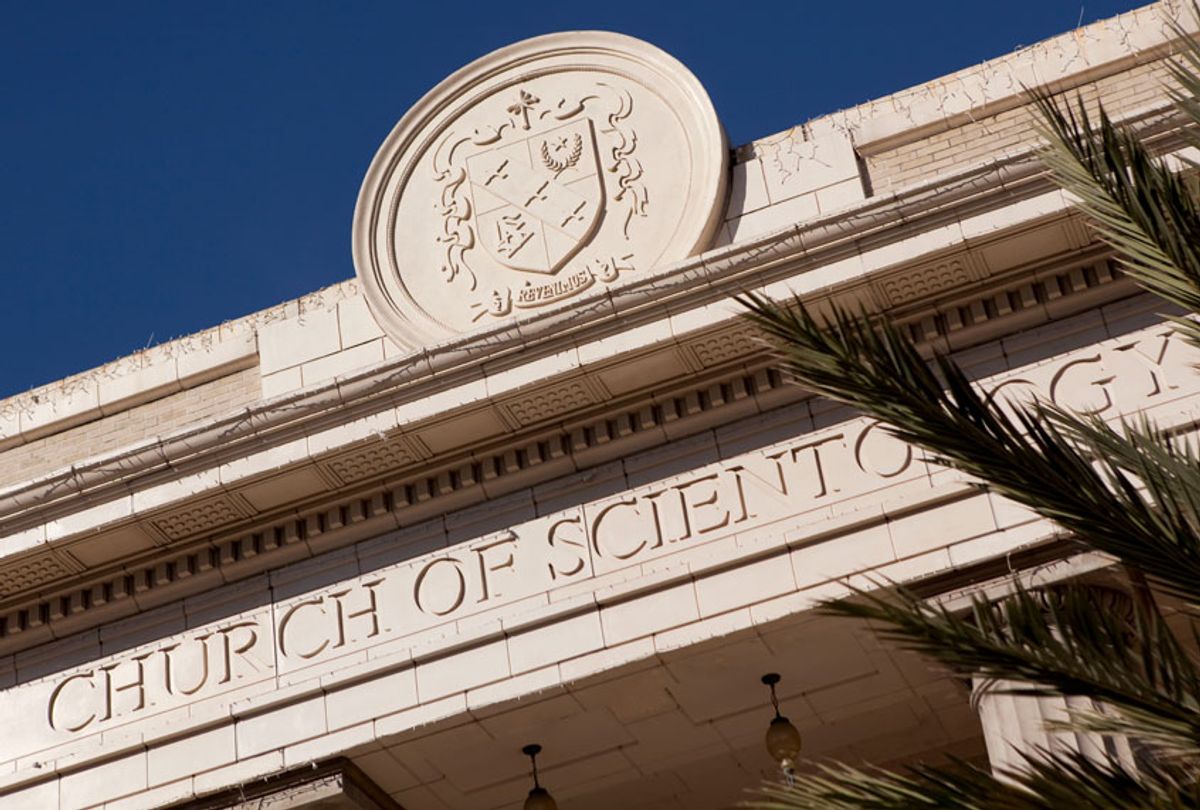For some reason, Scientologists don’t want you to be able to repair their religious artifacts

It may not appear in the sacred writings of any religious figureheads but my informal spiritual, political and professional credo is this: If you’ve angered the Church of Scientology without breaking any laws, you’re probably doing something right. In the most hilarious case-in-point this week — as brought to light by the newly-launched media venture 404 Media — the right thing you’re probably doing is exercising your right to repair.
That’s what appears to have sparked an outraged letter to the U.S. Copyright Office from a Church of Scientology-affiliated company, Author Services, on Aug. 10. In the letter, the Scientology-tied group is demanding a carve-out in right-to-repair laws that would almost certainly cover the Church’s special “auditing” device — the E-Meter, also known as the electropsychometer, as the shame-dowsing bunk boxes are more commonly known. The Church describes the electronic device, which was originally invented by a chiropractor named Volney Mathison, as a “religious artifact.”
Hard-won right-to-repair laws force tech giants, like Apple, to hand over device schematics to the day-saving heroes at your local independent repair shops. And there’s already a laundry list of exemptions in most of those laws, ranging from gaming consoles to tractors. But it appears the Scientology-tied group doesn’t want you to see behind the tech-curtain if a software-powered device can only be purchased by someone with special permission or training, or if the use of that device is limited by a license agreement (as has been the case with E-Meters).
Could there be other reasons the Church of Scientology and the affiliated group want the carve-out added? Sure. The letter’s author and legal director of author services, Ryland Hawkins, claims that being able to repair the baubles could somehow interfere with the devices proper use, which is “essential for the device manufacture[r] to maintain its reputation and goodwill.”
Those entrusting their souls to the machinations of this corporation and church deserve a clear view of the Wizard before setting up shop in Oz.
Never mind the fact that any reputation which can be broken with honesty deserves it, the oddest part of this Wizard of Oz bit is that the Church of Scientology has already openly admitted that “in itself, the E-Meter does nothing … The E-Meter is not intended or effective for the diagnosis, treatment or prevention of any disease.”
It’s the wisened hand of the administrator, under Scientology’s ordination, that purportedly allows the E-Meter to reflect an accurate reading of the test subject’s negative emotions through low-grade galvanic skin-contact responses. If this is indeed the truth, and the results of an E-Meter reading are not intentionally manipulated by the test’s administrator, then I’ve got no beef.
It would just mean the E-Meter plays the same role in this Scientology sin-confession ritual that other divination tools — like pendulums and dowsing rods — play in absolution rituals of other traditions of belief. The anthro-humanities student in me would be thrilled to discover as much. But let me be clear here: My insatiable devotion to the curious technological quest for the otherworldly, as undimmed in sheer delight as it may be, is irrevocably and happily married to my lifelong fury over religious con-artists who exploit spiritual pain for profit.
And that’s exactly why the E-Meter should be given no quarter under right-to-repair laws. Those entrusting their souls to the machinations of this corporation and church deserve full access to the man behind the curtain, a clear view of the Wizard before setting up shop in Oz.
It will take a few months, as 404 Media noted, before the Copyright Office will get to Hawkins’ letter and make a decision. In the meantime, I’ll be hungrily scanning the shelves of my local thrift stores for any loose E-Meters, gripping my iFixit screwdriver like it’s a fork waiting to tear apart a steak. If you find one before I do, drop me a line. I’d love to do lunch.
Until then, I’ll just have to settle for the satisfaction of knowing that my own chosen tools of divination are wholly open source — even as I’m whetting my appetite watching some lucky tech hero pick apart a Hubbard-matic 9000 on YouTube.
Read more
about the battle for right-to-repair protections

